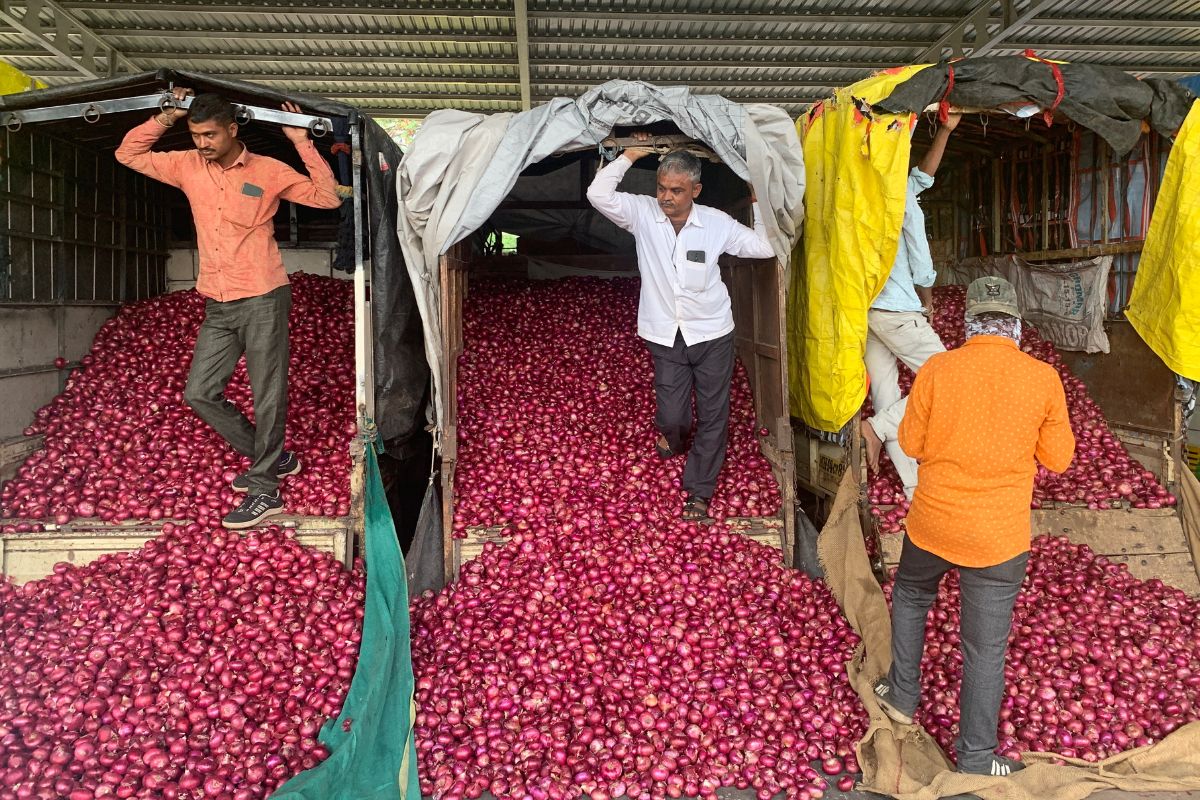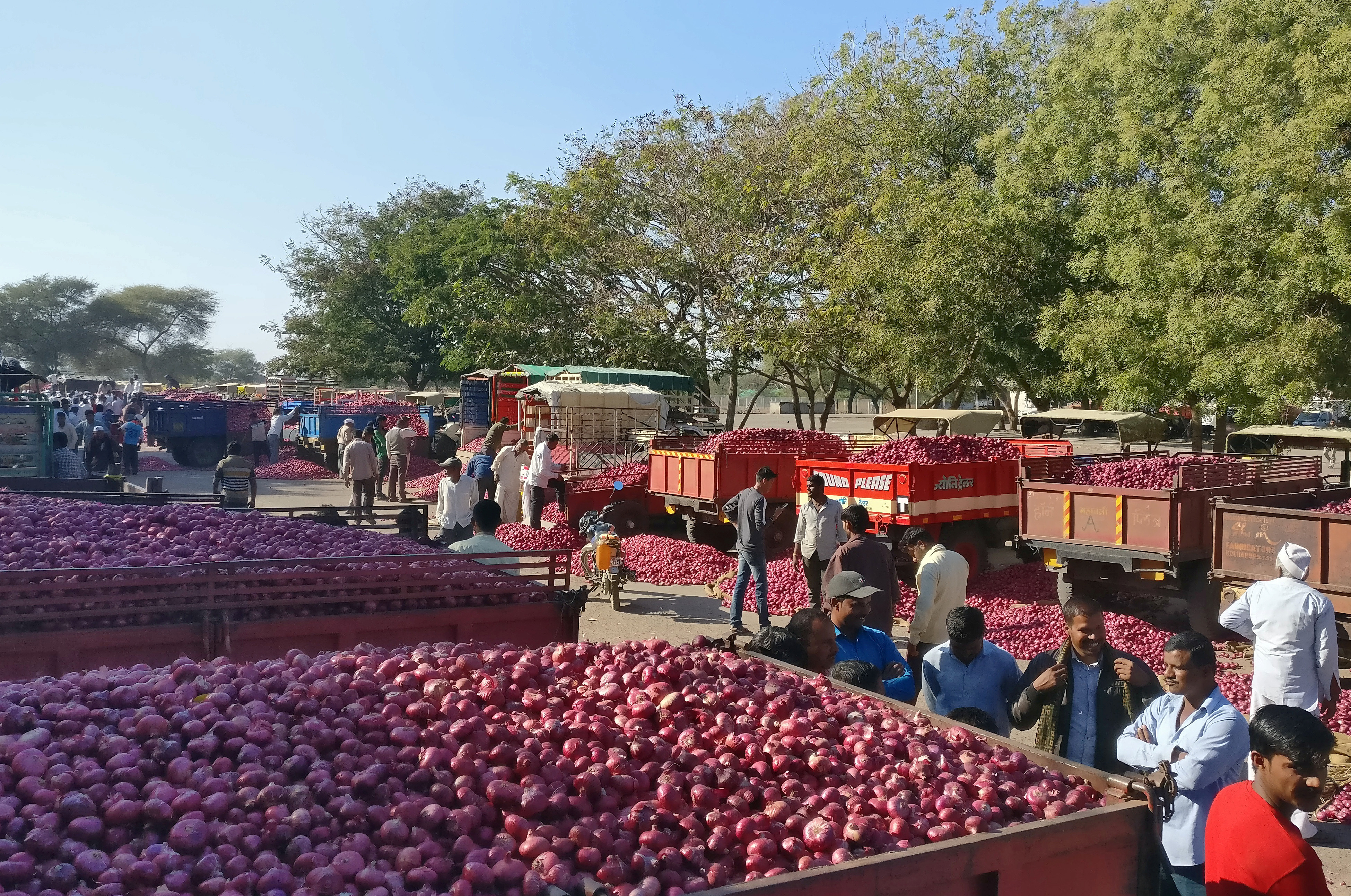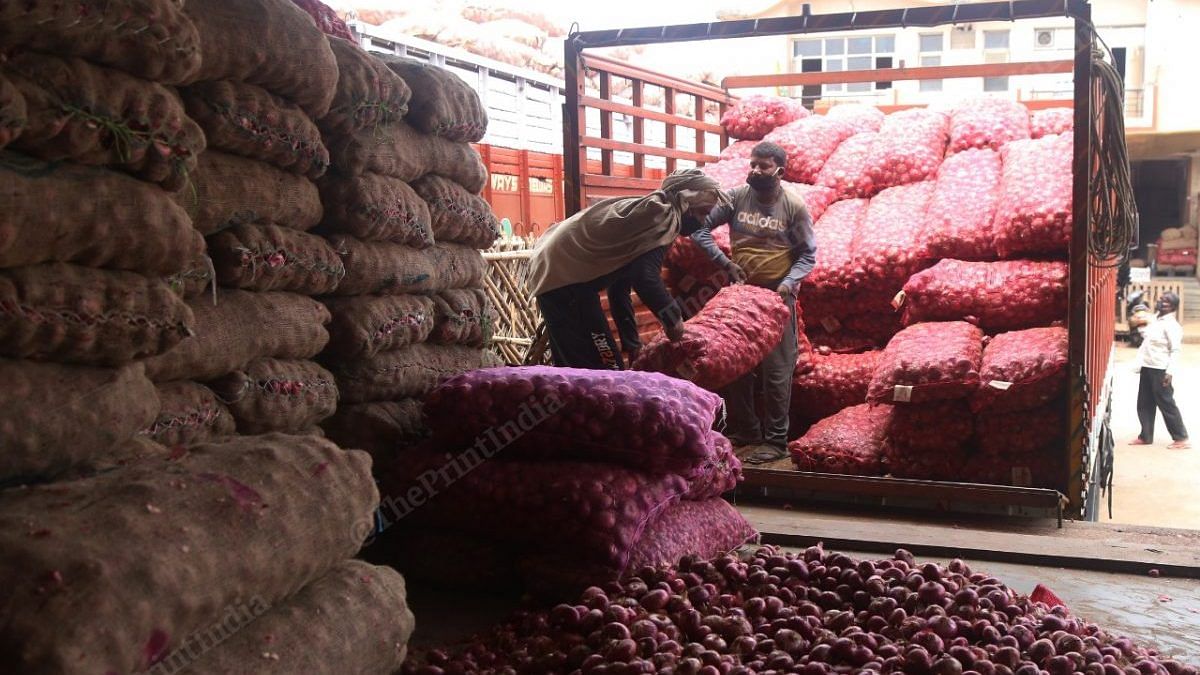Onion Mandis in Nashik Resume Operations After 3-Day Closure

Onion Mandis in Nashik Resume Operations After 3-Day Closure
After being closed for three days due to trader protests against the introduction of an export tariff, mandis in the Maharashtra district of Nashik, the country’s centre of onion cultivation and commerce, reopened on Thursday.
However, because farmers did not get the rate of “2,410 per quintal” as declared by the government on Tuesday, auctions at the agricultural produce market committees (APMCs) in Lasalgaon and Pimpalgaon were halted.

To assist farmers affected by the onerous 40% export tax on the vegetable, Union Food and Consumer Affairs Minister Piyush Goyal had pledged to buy 0.2 million tonne (MT) of onions from them at a rate of 2,410 per quintal, up from the going mandi price of 2,000 per quintal.
In order to build a 0.5 MT buffer stock, the government has instructed the National Cooperative Consumers Federation of India (NCCF) and the farmers’ cooperative Nafed to buy an additional 0.2 MT of onions from growers in Maharashtra and Madhya Pradesh over the next weeks.
According to a mandi official from Lasalgaon, the farmers stopped the sale because neither NAFED nor NCCF members were present.
When compared to the same time in the previous fiscal year, onion exports increased by more than 26% to 0.63 MT in April–June of 2023–24, causing the government to impose an export tax until December 31, 2023.Since January 2021, there hasn’t been a similar interference in onion exports.
Onion inflation increased to 11.72% in July after being in the negative range since September 2021.

The Centre reports that on Thursday, the median retail price of onions increased from Rs 20/kg at the start of the year to Rs 32/kg.
After a hiatus of over two years, retail prices of onions have resumed to climb recently due to reports of slow kharif seeding, which was hampered by the monsoon’s delayed arrival in the major producing states of Maharashtra and Karnataka.
After a three-day halt in operations, the onion wholesale markets, commonly referred to as ‘mandis,’ in Nashik have resumed their activities. The reopening comes as a sigh of relief for farmers, traders, and consumers alike. This article delves into the importance of these markets, the reasons behind the temporary closure, and the implications of their resumption.
Nashik, located in the state of Maharashtra, India, is a significant hub for onion production. The district accounts for a considerable percentage of India’s total onion output. The local mandis not only cater to the domestic market but also have an expansive network of exports. A stoppage in Nashik’s onion markets can ripple across the country affecting prices, supply, and export commitments.
The closure of the onion mandis was primarily due to disputes over pricing and unseasonal weather conditions affecting the crop. Another contributory factor was the logistical hiccups surrounding the transportation of onions, especially in the monsoon season.
- Pricing Disputes: Farmers and traders were at odds over the market prices, leading to protests and eventually a decision to halt operations temporarily.
- Weather Conditions: Unseasonal rains had affected the quality of the crop, leading to reservations among traders regarding the procurement of stock.
- Logistical Issues: Ongoing road repairs and monsoon-related disruptions had affected the smooth transportation of goods, contributing to the closure.
A bottleneck was created in the supply chain affecting retail markets, pushing up onion prices in various parts of the country. Commitments to countries in the Middle East, Southeast Asia, and other regions were put on hold, affecting India’s position as a reliable supplier.

Already struggling with crop losses due to weather, farmers faced additional financial strain as they couldn’t sell their produce.The disruption in supply led to a spike in retail onion prices, affecting household budgets.
Efforts from local agricultural departments, intervention by state authorities, and negotiations between farmer unions and traders led to the resolution of the conflicts. Agreed upon new pricing standards and assurances to smoothen logistical challenges contributed to the reopening of the mandis.
A new pricing mechanism was agreed upon to ensure fair compensation to farmers while keeping consumer interests in mind.Enhanced quality checks were instituted to assure traders of the value of the onions.Temporary subsidies were provided to offset transportation costs amid the monsoon season.
The resumption of onion mandis in Nashik is a crucial development for a multitude of stakeholders. While the closure served as a wake-up call highlighting systemic issues, the speedy resolution exemplifies the importance of these markets in India’s agricultural landscape.

Both short-term measures like revised pricing and long-term steps like improving infrastructure must continue to evolve to ensure the smooth functioning of these vital economic engines.




